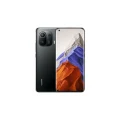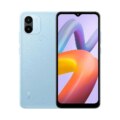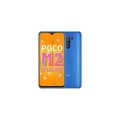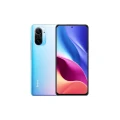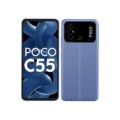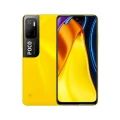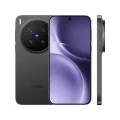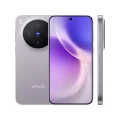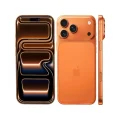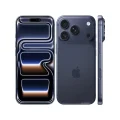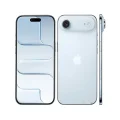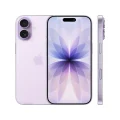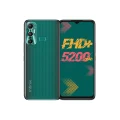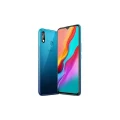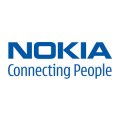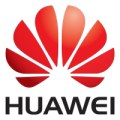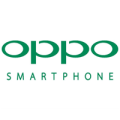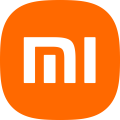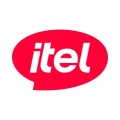- Home
- All Products
- Xiaomi
- Xiaomi Redmi K80 Ultra
Xiaomi Redmi K80 Ultra
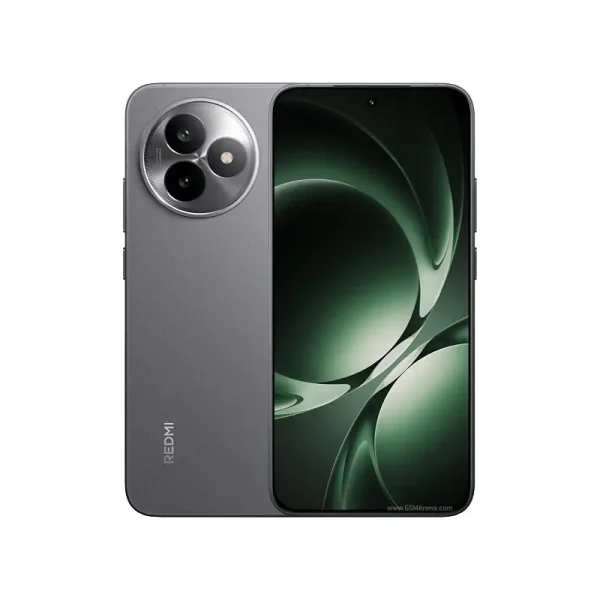

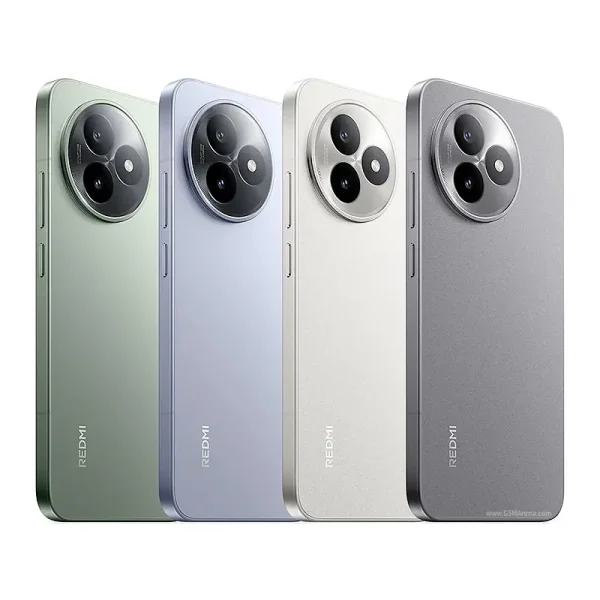
-
Battery: 7410 mAh
-
RAM: 12GB,16GB,
-
Storage: 256GB, 512GB, 1TB
-
Display: OLED, 6.83 inches
-
Camera: Rear 50MP+ 8MP and Front 20MP
-
OS: Android 15, HyperOS 2
Full Specifications
Price
| Official | 49990 BDT 12GB/256GB Approx. |
General
| Model | Xiaomi Redmi K80 Ultra |
| Announced | 2025, June 26 |
| Released | 2025, June 26 |
| Status | Available |
Design
| Dimensions | 163.1 x 77.9 x 8.2 mm (6.42 x 3.07 x 0.32 in) |
| Weight | 219 g (7.72 oz) |
| SIM SIM (Subscriber Identity Module) is a small card that contains mobile network subscriber's account information. This allows the phone using the card to attach to a mobile network. The SIM card is most commonly associated with GSM and UMTS mobile networks. Moving a SIM card from one phone to another allows a subscriber to switch mobile phones without having to contact their mobile network carrier. SIM cards can also be used by a phone to store limited amounts of data, such as phone numbers and text messages. |
Nano-SIM + Nano-SIM IP68 dust tight and water resistant (immersible up to 2m for 30 min) |
| Colors | Gray, White, Blue, Green |
Display Specification
| Display Type Display Technology => A number of display technologies and types used in mobile phones => TFT (Thin Film Transistor), IPS (In-Place Switching), OLED (Organic Light Emitting Diode), AMOLED (Active-Matrix Organic Light-Emitting Diode), Super AMOLED (an even advanced version of AMOLED), Resistive Touchscreen (Resistive touchscreens contain two layer of conductive material with a very small gap between them which acts as a resistance), Capacitive Touchsceen (Capacitive touchscreen technology consists of a layer of glass coated with a transparent conductor) | OLED, 68B colors, 144Hz, Dolby Vision, HDR10+, HDR Vivid, 1800 nits (HBM), 3200 nits (peak) |
| Size | 6.83 inches, 114.5 cm2 |
| Resolution | 1280 x 2772 pixels, 19.5:9 ratio |
| Pixel Density Pixel Density (PPI) is refers to the concentration of pixels on a particular display, measured in pixels per inch (ppi). Pixel density is calculated by dividing the diagonal pixel resolution of a display by its diagonal size, higher pixel density better display quality. | 447 ppi density |
| Display Protection Display Protection => Gorilla Glass is a special alkali-aluminosilicate glass shield with exceptional damage resistance that helps protect mobile displays from scratches, drops, and bumps of everyday use, It is always better to go for a smartphone with Gorilla Glass for that added protection and peace of mind. | Scratch/drop-resistant glass |
Platform
| Operating System OS => Every computer system run on a base software called Operating System (OS). Operating System controls all basic operations of the computer (such as smartphone, PDAs, tablet computers and other handheld devices). The Operating System allows the user to install and run third party applications (apps), apps are used to add new functionality to the device. | Android 15, HyperOS 2 |
| Chipset Chipset is a group of integrated circuits designed to perform one or a more dedicated functions, often with real time computing constraints, Popular smartphones are equipped with more advanced embedded chipsets that can do many different tasks depending on their programming. | Mediatek Dimensity 9400+ (3 nm) |
| CPU CPU (Central Processing Unit) mostly known as processors, CPU processes instructions in order to carry out certain functions that make your device operate properly. Processors are often described as the brain of computers, smartphones and tablets, Smartphones and tablets rely on processors to carry out their every task, Processors are an incredibly important factor in selecting any type of computing device, including your smartphone. | Octa-core (1x3.63 GHz Cortex-X925 & 3x3.3 GHz Cortex-X4 & 4x2.4 GHz Cortex-A720) |
| GPU GPU (Graphics Processing Unit) is a single-chip processor designed to rapidly manipulate and alter memory to accelerate the creation of images in a frame buffer intended for output to a display, This includes things such as lighting effects, object transformations, and 3D motion. | Immortalis-G925 |
Main Camera
| Camera Setup | Dual |
| Resolution |
50 MP, f/1.9, 23mm (wide), 1/1.55", 1.0µm, PDAF, OIS 8 MP, 119˚ (ultrawide), 1/4.0", 1.12µm |
| Features | Color spectrum sensor, Dual-LED dual-tone flash, HDR, panorama |
| Video | 8K@30fps, 4K@30/60fps, 1080p@30/60/120/240/960fps, gyro-EIS |
Selfie Camera
| Camera Setup | Single |
| Resolution | 20 MP, (wide), 1/2.0", 0.8µm |
| Video | 1080p@30/60fps |
| Features | HDR |
Network & Connectivity
| Technology | GSM / CDMA / HSPA / CDMA2000 / LTE / 5G |
| Speed | HSPA, LTE, 5G |
| Wi-fi Wi-Fi is a popular wireless networking technology using radio waves to provide high-speed network connections that allows devices to communicate without cords or cables, Wi-Fi is increasingly becoming the preferred mode of internet connectivity all over the world. | Wi-Fi 802.11 a/b/g/n/ac/6/7, dual-band, Wi-Fi Direct |
| Bluetooth Bluetooth is a wireless communications technology for exchanging data between mobile phones, headsets, computers and other network devices over short distances without wires, Bluetooth technology was primarily designed to support simple wireless networking of personal consumer devices. | 5.4, A2DP, LE, LHDC 5 |
| NFC NFC (Near field communication) is a set of standards for smartphones and similar devices to establish peer-to-peer radio communications with each other by touching them together or bringing them into proximity, usually no more than a few inches. | Yes |
| Positioning | GPS (L1+L5), BDS (B1I+B1C+B2a+B2b), GALILEO (E1+E5a+E5b), QZSS (L1+L5), NavIC, GLONASS |
| FM Radio | No |
| USB | USB Type-C |
| 2G Network |
GSM 850 / 900 / 1800 / 1900 CDMA 800 |
| 3G Network |
HSDPA 800 / 850 / 900 / 1700(AWS) / 2100 CDMA2000 1x |
| 4G Network | 1, 3, 4, 5, 7, 8, 18, 19, 26, 28, 34, 38, 39, 40, 41, 42, 48, 66 |
| 5G Network | 1, 3, 5, 7, 8, 26, 28, 38, 40, 41, 48, 66, 77, 78 SA/NSA |
Battery
| Battery Type Battery Type => Cell phones run on various kinds of batteries depending on the manufacturer, phone size or shape and features. There are basically four types of cell phone batteries => Lithium Polymer, Lithium Ion, Nickel Metal Hydride and Nickel Cadmium. | Li-Ion (Lithium Ion) |
| Capacity Battery Capacity is a measure (typically in Amp-hr) of the charge stored by the battery, and is determined by the mass of active material contained in the battery. The battery capacity represents the maximum amount of energy that can be extracted from the battery under certain conditions. | Si/C Li-Ion 7410 mAh |
| Removable | Yes |
| Charging |
100W wired, PD3.0 Bypass charging |
| Wireless Charging Wireless Charging (Inductive Charging) uses an electromagnetic field to transfer energy between two objects. This is usually done with a charging station. Energy is sent through an inductive coupling to an electrical device, which can then use that energy to charge batteries or run the device. | No |
Multimedia
| Loudspeaker | Yes, with stereo speakers |
| Audio Jack | No |
| Audio Features | 24-bit/192kHz Hi-Res & Hi-Res Wireless audio |
Storage
| Card Slot Memory Card Slot is a special slot for inserting a memory card. Memory cards allow you to expand the phone's built-in memory, A memory card (sometimes called a flash memory card or a storage card) is a small storage medium used to store data such as text, pictures, audio, and video, for use on small, portable or remote computing devices such as mobile phones, mp3 players, digital cameras. | No |
| Internal Storage Internal Storage is a data storage space (flash memory) mostly used in smartphones, tablets and other electronic devices where operating system, apps, music, photos, videos, files and other user data Is stored. |
256GB 12GB RAM, 256GB 16GB RAM, 512GB 12GB RAM, 512GB 16GB RAM, 1TB 16GB RAM UFS 4.1 |
Sensors
| Fingerprint | Yes (under display, ultrasonic) |
| Other Sensors | accelerometer, gyro, proximity, compass |
PROS
- Outstanding 144 Hz OLED with extreme brightness and fast touch response
- Snapdragon-class performance via Dimensity 9400+ chipset
- Massive 7,410 mAh battery with rapid 100 W charging
- Rugged IP68 build with premium feel
- Ample RAM/storage options up to 1 TB
- Feature rich with Wi Fi 7 and Dolby Vision support
CONS
- No wireless charging
- Ultrawide shooter is only 8 MP—average by flagship standards
- Weighs 219 g—on the heavier side
- Initially China exclusive; global launch details TBD
About the Xiaomi Redmi K80 Ultra
The Redmi K80 Ultra, launched on June 26, 2025, marks Redmi’s boldest move into flagship territory. Powered by the latest MediaTek Dimensity 9400+ (3 nm), it promises top-tier performance and energy efficiency. Featuring a vibrant 6.83″ 1.5K OLED screen with 144 Hz refresh rate and up to 3,200 nits peak brightness, it delivers a spectacular viewing experience.
The 7,410 mAh battery with 100 W wired fast charging ensures endurance without sacrificing speed. Although it skips wireless charging, it offers IP68 dust and water resistance, dual stereo speakers, and a capable dual-camera setup (50 MP main with OIS + 8 MP ultrawide). All of this runs on Android 15 with HyperOS 2, wrapped in a sleek 219 g metal-and-glass body, making it a formidable value-packed flagship alternative.
Main Key Features
- Display: 6.83″ 2772 × 1280 OLED; 144 Hz refresh; 480 Hz touch sampling; Dolby Vision, HDR10+; Xiaomi Shield Glass; up to 3,200 nits peak
- Processor: MediaTek Dimensity 9400+ (3 nm), Immortalis‑G925 GPU
- Memory & Storage: 12 GB/16 GB LPDDR5X RAM; 256 GB/512 GB/1 TB UFS 4.1
- Cameras: 50 MP wide (OIS) + 8 MP ultrawide; 20 MP front; up to 8K video
- Battery: 7,410 mAh; 100 W wired (PD3.0 + bypass); no wireless charging
- Build & Durability: 163.1 × 77.9 × 8.2 mm; 219 g; IP68 rated
- Extras: Stereo speakers, Hi‑Res audio, Wi‑Fi 7, BT 5.4, NFC, IR Blaster, under-display fingerprint
Opinion
The Redmi K80 Ultra stands out as a true “flagship killer” in 2025, offering unmatched display quality, massive battery life, and top-tier performance, all starting around $360 in China. Its lack of wireless charging and a modest ultrawide camera are minor trade-offs for users prioritizing speed, screen, and endurance. With these specs, it’s a compelling alternative to pricier handsets, especially if it goes global under the Poco brand.
See Another Model:
FAQs about Xiaomi Redmi K80 Ultra
Q: Does it support wireless charging?
A: No only 100 W wired fast charging is supported.
Q: What chipset is inside?
A: The flagship-grade MediaTek Dimensity 9400+ (3 nm).
Q: How good is the display?
A: A 6.83″ 1.5K OLED screen with 144 Hz refresh, 480 Hz touch, Dolby Vision, HDR10+, and up to 3,200 nits peak brightness.
Q: What cameras does it have?
A: Dual rear cameras: 50 MP main with OIS and 8 MP ultrawide; a 20 MP selfie shooter.
Q: How long does the battery last?
A: The 7,410 mAh cell offers excellent endurance; expect 1.5–2 days of typical use.
Q: Will it be sold globally?
A: Currently available in China; global release is possible under Redmi or Poco branding, but details are pending.
Q: What OS does it run?
A: Android 15 with Xiaomi’s HyperOS 2.
Give Your Review
Disclaimer Note
You can write your own disclaimer from APS Settings -> General -> Disclaimer Note.
